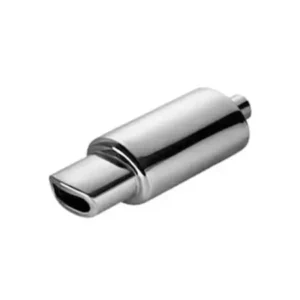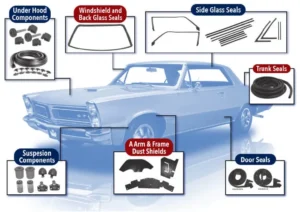Imagine taking apart your favorite gadget—not to break it, but to figure out how it ticks. That’s reverse engineering in a nutshell, and it’s more exciting than it sounds! Whether you’re a curious tinkerer, a frustrated inventor, or just someone who wonders how things are made, understanding the reverse engineering meaning can unlock a world of possibilities. But here’s the catch: it’s often shrouded in mystery, leaving people confused about where to start or why it even matters. Don’t worry—this guide breaks it all down with simple steps and real-world insights, promising you’ll walk away knowing exactly what reverse engineering is and how it’s used every day. Ready to dive in?
What Is Reverse Engineering? A Simple Definition
Let’s kick things off with the basics. The reverse engineering definition is straightforward: it’s the process of taking something apart—whether it’s a machine, software, or even a product—to understand how it works, often with the goal of recreating or improving it. Think of it like solving a puzzle backward.
Why does this matter? Because it’s how innovators learn from what’s already out there. From car engines to smartphone apps, reverse engineering fuels creativity and problem-solving. And here’s an open loop to keep you hooked: there’s a surprising everyday example coming up that’ll make you see it differently!
Why Reverse Engineering Matters to You
You might be wondering, “Okay, but how does this affect me?” Great question! Reverse engineering isn’t just for tech wizards or big companies—it’s a skill that touches your life more than you think.
- Innovation: Ever wonder how generic brands mimic big-name products? Reverse engineering.
Repair: That old coffee maker you fixed by figuring out its insides? That’s reverse engineering too.
Learning: It’s a hands-on way to understand complex systems without starting from scratch.
I’ve tinkered with broken gadgets myself, piecing them together to see what makes them hum. It’s empowering—and a little addictive. Experts at places like reverse engineering companies use this daily to solve real-world problems, proving its value across industries.
How Does Reverse Engineering Work? The Step-by-Step Breakdown
Ready to see how it’s done? Here’s a clear, actionable rundown of the reverse engineering process. No jargon—just practical steps you can picture (or even try!).
Step 1: Pick Your Target
Choose something to analyze—a toy, an app, anything. Start small if you’re new to this.
Step 2: Gather Tools
For physical objects, you might need screwdrivers or scanners. For software, think debuggers or code readers.
Step 3: Take It Apart
Disassemble carefully. Note how pieces fit together. If it’s digital, dig into the code or structure.
Step 4: Document Everything
Sketch, photograph, or write down what you find. This is your blueprint for understanding.
Step 5: Analyze and Rebuild
Figure out why it works that way. Could you recreate it? Improve it? This is where the magic happens.
For example, companies offering reverse engineering CAD turn physical objects into digital models using this method. It’s precise, practical, and incredibly useful.
Real-World Examples That Spark Curiosity
Still think reverse engineering sounds dry? Let’s bring it to life with examples you’ll recognize.
- The Wright Brothers: They studied birds’ wings to build the first airplane—nature’s reverse engineering at its finest.
Tech Giants: Ever notice how smartphone features “borrow” from each other? That’s reverse engineering in action.
Your Kitchen: Ever tweaked a recipe by guessing what’s in it? Yep, you’ve reverse engineered a meal!
Here’s that everyday twist I promised: the generic pain reliever you buy? It’s likely a reverse-engineered version of a pricier drug, saving you money. Cool, right?
The Benefits of Understanding Reverse Engineering
Why should you care about mastering this? Because the payoffs are huge—both personally and professionally.
- Problem-Solving: You’ll tackle challenges by breaking them into manageable parts.
Cost Savings: Companies use it to create affordable alternatives (like that pain reliever).
Skill Boost: It sharpens your analytical mind, a trait employers love.
Studies show industries like manufacturing and software rely on reverse engineering to stay competitive. It’s not just a tool—it’s a mindset. What’s one thing in your life you’d love to decode?
Common Misconceptions About Reverse Engineering
Let’s clear the air. Reverse engineering gets a bad rap sometimes, so here’s the truth behind the myths.
Myth 1: It’s Illegal
Not true! It’s legal in many cases—like for learning or compatibility—though copying patented designs can cross lines. Be ethical about it.
Myth 2: It’s Too Complicated
Nope. Start with something simple, like a pen, and you’ll see it’s just curiosity plus patience.
Myth 3: Only Experts Do It
Wrong again. Anyone can try it with the right approach. Trust me—I’ve fumbled through it and learned along the way.
Being real about its limits builds trust, right? It’s not a free-for-all, but it’s more accessible than you think.
Tools and Tech That Power Reverse Engineering
Wondering what pros use? Here’s a peek at the toolkit—some you might even have at home!
- 3D Scanners: For capturing object shapes digitally.
CAD Software: Turns scans into editable designs (check out reverse engineering CAD for more).
Debuggers: For cracking software code.
Basic Hand Tools: Screwdrivers, pliers—low-tech but effective.
Extra tip: If you’re starting, try free software like Blender for digital modeling. It’s a game-changer for beginners.
How Businesses Use Reverse Engineering (And Why It Works)
Companies don’t just tinker for fun—they profit from it. Here’s how:
- Competitor Analysis: They dissect rival products to stay ahead.
Legacy Parts: Old machinery breaks? Reverse engineer a replacement.
Customization: Tailor products to new needs without reinventing the wheel.
Places like RDS show this in action, blending expertise with cutting-edge tech. It’s why they’re leaders among RDS, reverse engineering companies. Persuasive, right? Because it’s practical and proven.
Extra Tips to Get Started With Reverse Engineering
Want to dip your toes in? Here’s how to kick off without overwhelm:
- Start Small: Take apart a cheap toy or download a simple app to explore.
Watch Tutorials: YouTube’s full of guides—visual learning speeds things up.
Join a Community: Forums like Reddit’s r/reverseengineering connect you with others.
One trick I love? Keep a notebook handy—scribbling notes as you go makes patterns pop. What’s stopping you from trying this today?
The Future of Reverse Engineering
Where’s this all heading? The possibilities are wild. With AI and 3D printing, reverse engineering is getting faster and smarter. Imagine scanning an object and instantly printing a better version—that’s not sci-fi, it’s coming.
Experts predict it’ll reshape industries like healthcare (custom prosthetics!) and aerospace (lighter parts!). Curious about what’s next? Stick around—this field’s only heating up.
Conclusion: Unlock the Power of Reverse Engineering
So, there you have it—the reverse engineering meaning demystified. It’s about curiosity, breaking things down, and building them back smarter. From everyday fixes to world-changing innovations, it’s a skill that empowers you to understand the “why” behind the “what.”
Now it’s your turn. Pick something—a gadget, a recipe, anything—and give it a shot. You’ll be amazed at what you uncover. Which idea from this guide are you excited to try? Drop it in the comments below—I’d love to hear your thoughts!





